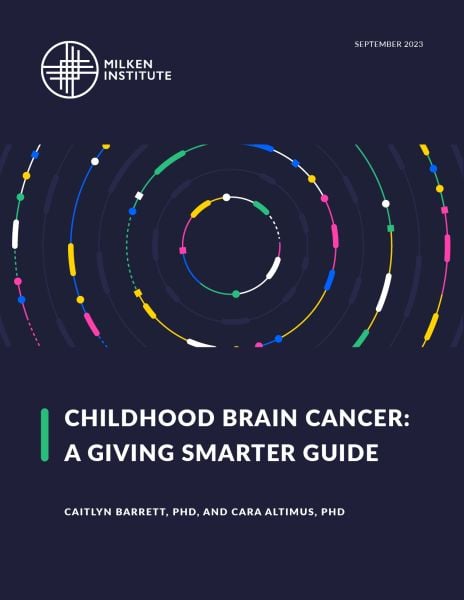
Childhood Brain Cancer: A Giving Smarter Guide
Pediatric brain cancer accounts for 16 percent of all new childhood cancer diagnoses, making it one of the most common cancer diagnoses in children and adolescents. It is also the leading cause of cancer death within this age group. Unlike adults diagnosed with brain cancer, children's bodies continue to develop while in treatment. Despite biological differences, adults and children with brain cancer are treated using a one-size-fits-all approach, leading to inefficient results. The lack of targeted research and therapy in pediatric brain cancer leads to significant long-term health issues for children and adolescents.
Additionally, families bear enormous financial hardship as a result of pediatric cancer patients' treatment and long-term management. One in four families in the US loses more than 40 percent of their household income due to treatment-related work disruption, and parents of childhood cancer survivors report lower income and higher risk of poverty. The economic burden on families emphasizes the desperate need for more effective treatment paths to improve pediatric patients and their loved ones' long-term financial and physical well-being.
Fortunately, philanthropy, if deployed strategically, can ignite much-needed change in the evolving field of rare and less well-understood cancer subtypes. This report by MI Philanthropy identifies the primary scientific and infrastructure needs, highlighting opportunities for philanthropists to stimulate neglected areas regarding funding and research. The guide recognizes seven areas for philanthropic investment that, if utilized, can transform how pediatric cancer patients are diagnosed, managed, and treated.


